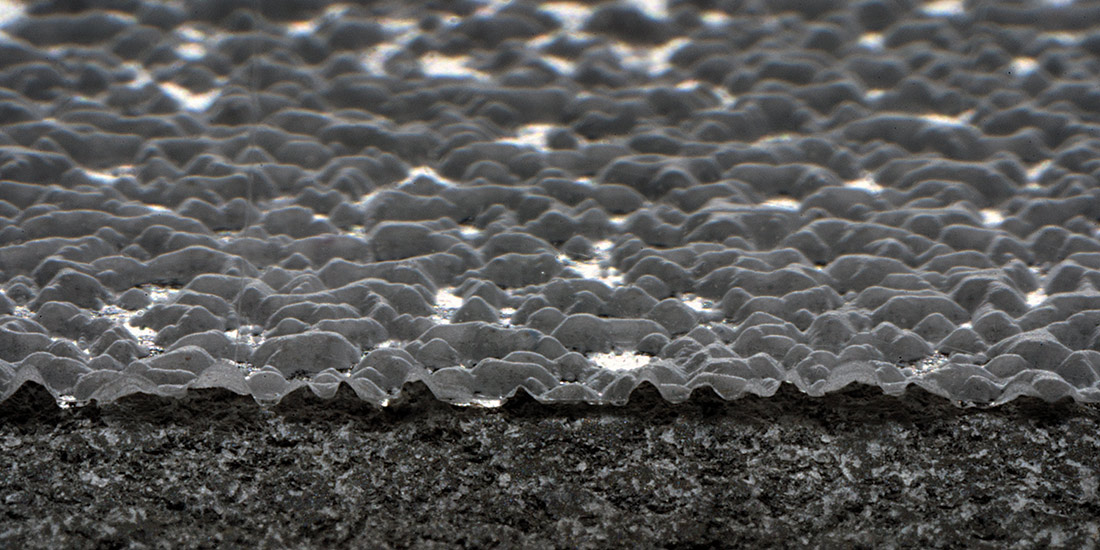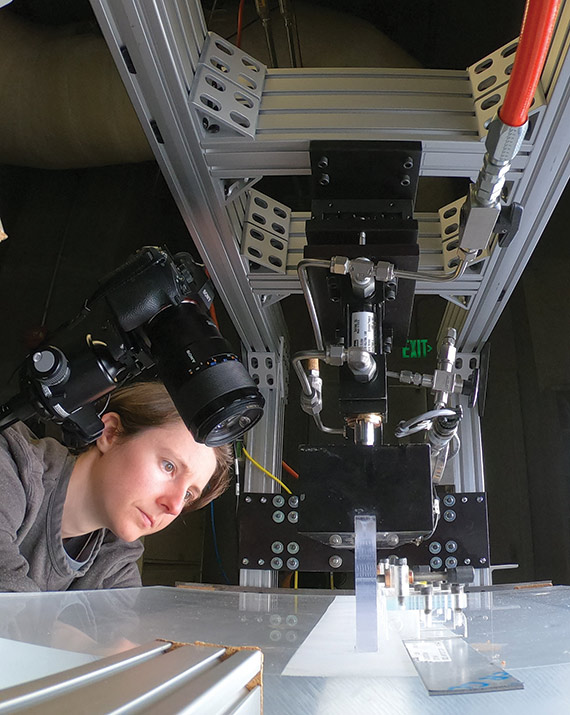
At fault
 Parker applies different forces to a fault interface, made of an acrylic slider block and a base plate. When all or part of the fault can no longer hold up, it causes slippage — comparable to a mini-earthquake. Using acoustic emission sensors as seismometers, the researchers can measure which asperities fail, and when, in a highly detailed way.A seismic rupture often occurs over a single asperity, an uneven area on a fault where friction causes it to be stuck. When an asperity slips, it produces seismic waves that can trigger additional movement along the fault, resulting in another earthquake. Civil and environmental engineering Ph.D. student Jes Parker, working in the lab of professor Steven Glaser, is part of a team that is taking research on asperities to a new level, studying fault mechanics at the nanoscale. “As far we can tell, friction behaves the same at all scales,” Parker said. “So the energy signature of events in the lab can show a miniature version of full-scale tectonic earthquakes.”
Parker applies different forces to a fault interface, made of an acrylic slider block and a base plate. When all or part of the fault can no longer hold up, it causes slippage — comparable to a mini-earthquake. Using acoustic emission sensors as seismometers, the researchers can measure which asperities fail, and when, in a highly detailed way.A seismic rupture often occurs over a single asperity, an uneven area on a fault where friction causes it to be stuck. When an asperity slips, it produces seismic waves that can trigger additional movement along the fault, resulting in another earthquake. Civil and environmental engineering Ph.D. student Jes Parker, working in the lab of professor Steven Glaser, is part of a team that is taking research on asperities to a new level, studying fault mechanics at the nanoscale. “As far we can tell, friction behaves the same at all scales,” Parker said. “So the energy signature of events in the lab can show a miniature version of full-scale tectonic earthquakes.”

